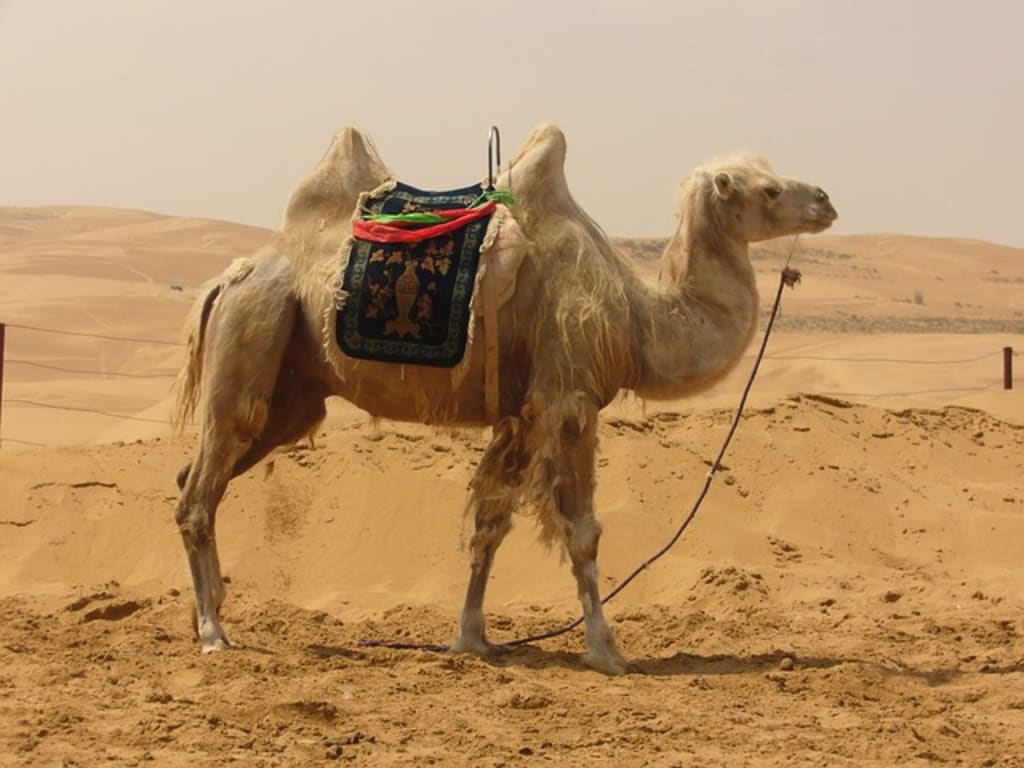
Camelids - Camels and related species - have long, slender legs and a characteristic gait called buiestru, through which the forelegs and hind legs on the same side move forward together in a swaying motion. Of the camelids in the Old World - the camels - only one species (the Bactrian camel, from the border area between western China and Mongolia) now survives in the wild.
A camel can drink up to a quarter of its weight at a time and can store water for several days. The New World members of this family, guanaco and vicunia, meet in the wild in South America; his domestic descendants, the llama and the alpaca, were raised in the Andes since the days of the Inca civilization. All domesticated camelids are vital to human survival: they provide them with hair, milk and transport.
Camelids - Camels and related species - have long, slender legs and a characteristic gait called buiestru, through which the forelegs and hind legs on the same side move forward together in a swaying motion. Of the camelids in the Old World - the camels - only one species (the Bactrian camel, from the border area between western China and Mongolia) now survives in the wild.
A camel can drink up to a quarter of its weight at a time and can store water for several days. The New World members of this family, guanaco and vicunia, meet in the wild in South America; his domestic descendants, the llama and the alpaca, were raised in the Andes since the days of the Inca civilization. All domesticated camelids are vital to human survival: they provide them with hair, milk and transport.
Anatomy
Camelids have a relatively small head, a long, slender neck and a split upper lip. The camels have either a single hump (dromedary) or two humps (Bactrian camel): they store fat that can be used when food is lacking. All camelids have a thick coat that provides them with insulation against the heat of the day and heat during cooler nights or at high altitudes.
Unlike other hoofed mammals, camelids rest their weight not on hooves, but on the lower two toes of each foot, which are lined with a fat pad. This is an adaptation to walking on sandy ground.
Camelids are unique among mammals in that they have oval hematocytes, possibly so that these red blood cells can be easily transported throughout the body, even if the blood thickens due to dehydration.
Social interaction
In the wild, camelids form groups of a dominant male and a harem of females. "Excess" males form "single" groups. If the social systems of South American camelids have not been studied in great detail, more is known about how camels interact with each other. Both species go through an elaborate and dramatic ritual when a dominant male confronts a suitor.
First, the harem leader grits his teeth, rubs a gland on the back of his head (or the front hump in the case of the Bactrian camel), slaps his tail noisily on the crotch, and urinates on his hind limbs. and tail. The two then step next to each other, display their high, hunched profiles, and pull a sack like a red bladder (dulaa) out of the corner of their mouth.
Wild and domestic
The only wild camel in the Old World is the Bactrian camel (with two humps), although its number has now dropped to only 1,000-2,000 individuals. It is taller and thinner than its domestic counterpart and has more compact and sharp humps. Domestic bacterial camels are used for transportation in the cold regions of northern China to Turkey.
The dromedary has disappeared into the wild, although wild herds now live in central Australia. Domestic dromedaries are found in the warm regions of North and Northeast Africa, the Middle East and northern India as far as Kazakhstan. As with other domestic animals, there are various breeds, one of which is bred for speed and is used in camel races.
The llama is a domestic animal raised as a descendant of the wild guanaco and is the traditional burden animal of the Andes. Alpaca is also a domestic species, bred for very good quality wool. In the past, the alpaca was thought to be a descendant of the guanaco, but current genetic evidence shows that it is a descendant of the vicuna, a wild species with fine wool that lives at high altitudes in the Andes.
The camels are well adapted to life in warm climates. Their wide legs provide stability on desert sand and have long, slit-like nostrils that can be closed, which gives them protection during sandstorms.





Comments
There are no comments for this story
Be the first to respond and start the conversation.